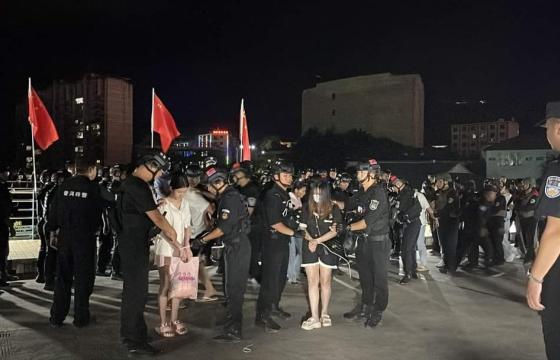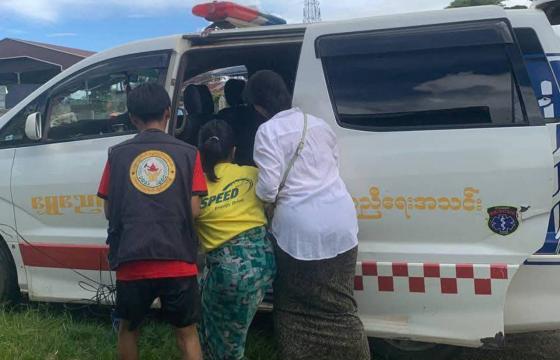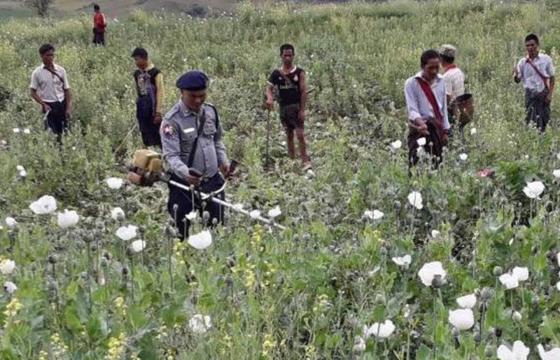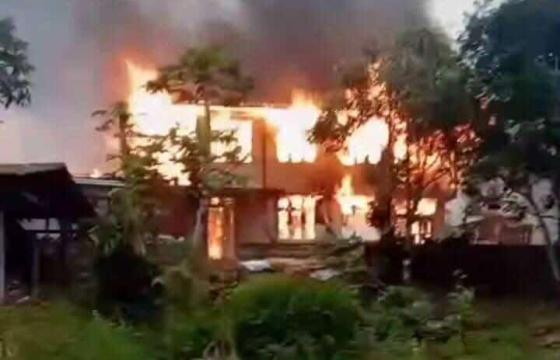Just as the the Military or Tatmadaw’s peace initiative in the form of unilateral ceasefire covering five military commands seems to be going down the drain, as the Northern Alliance – Burma (NA-B) rejected the partial Tatmadaw’s overtures if it is not nationwide, the repatriation of the Kachin Internally Displaced Persons (IDPs) move by the latter might play the role of salvaging the situation from total failure.
On December 29, Colonel Htun Nay Lin said the Tatmadaw is beginning to resettle the IDPs caused by fighting between itself and the Kachin Independence Army (KIA) as soon as possible. He reportedly told the media: “We intend to resettle the people from IDP camps back to their villages as soon as possible. We are in the process of negotiating now.”
Model village?
He said that mine clearing is being conducted in Nam San Yang village, Waing Maw Township, destroyed because of the battles, which is on the road between Myitkyina and Laiza.
“For the moment, it is the most suitable place that could be quickly realized. We have to prioritize the place which is readily habitable,” the Colonel explained.
He added: “We will arrange so that all could return. And in order all villagers avoiding the battles could return the KIA also need to help as much as possible.”
Reportedly, on December 28, Christmas was celebrated with about 400 people from Myitkyina and Waing Maw Townships living in IDP camps headed by Catholic church members said U Saing Khon, a participant.
Some 17 families were allowed to resettle in the village and the Tatmadaw is said to be clearing mines in the vicinity, according to U San Aung of Peace-talk Creation Group (PCG). He said: “We learned 17 families are resettled. Nam San Yang was a big village of 2000 inhabitants before, now the 17 families are the first to come. The people who came back only need to do small repairing. Those whose houses are badly damaged cannot return as they have no place to stay. I was told that the Tatmadaw set up mines were being cleared by the concerned military authority.”
He further explained: “The rest couldn’t be done for the moment. After negotiation between both parties (KIA and Tatmadaw), there are a lot of things to do.”
KBC observation
The Irrawaddy interviewed head of the Kachin Baptist Convention (KBC) Rev. Dr. Samson Hkalam, regarding the issues surrounding the Kachin people in relation to the repatriation, during the four months ceasefire period.
Responding to the question on what the KBC plan to do for the IDPs during the four months ceasefire period, he answered: “We intend to arrange according to the restriction and decision made after their meeting. Because it is more secure to return if both sides are in agreement, as it shouldn’t be that only one side said the IDPs can go home. We are waiting for the meeting (between the Tatmadaw and KIA).”
According to the KBC, it speculated the areas around Bhamo, Mansi, Myitkyina and in Shan State around Muse Township where if the Tatmadaw and KIA are in agreement, they could be in order to return.
When asked even in the Nationwide Ceasefire Agreement (NCA)-signatories’ areas the IDPs resettlement still cannot be implemented, how will it look like in Kachin State and how it should be pushed through, he replied: “The views of the public and the IDPs are if the Tatmadaw’s troops will withdraw and the KIA won’t come to those places, it will be most secure for us. But if the Tatmadaw’s camps will be there and the KIA will also come, there is no security for us.”
He emphasized: “What we want it to happen is that in order that the KIA won’t be able to attack, the Tatmadaw should withdraw all its camps near the villages, that is the main thing.”
On question of whether the KIA is now toeing the line of NCA-based peace process, Rev. Dr. Samson Hkalam said: “Rather than the NCA line of approach, I take it that the KIA is focusing more on starting to implement the bilateral (ceasefire and agreement). As for the NCA political line of approach a lot of discussion will still be needed.”
Regarding the leading question posed whether the first priority for the Kachin is the return of the IDPs, he answered: “Because the KIA sees the return of IDPs as a priority, the negotiation process on the (corresponding) issues have developed.”
China’s help
Hong Liang, China’s ambassador to Myanmar visited Kachin State from December 28 to 29, where he met ethnic Kachin leaders from three political parties to discuss the faltering peace process which the Myanmar government is trying to get its military and nearly a dozen ethnic armies to agree to a permanent ceasefire, according to a Chinese representative on December 31.
“The Chinese ambassador said China will help provide food and medicine for internally displaced persons in Kachin State and will continue to help them return to their homes,” said Tu Ja, chairman of the Kachin State Democracy Party (KSDP), who also participated in the meeting with Hong, reported the media.
In November last year, the Office of Chinese Embassy also gave humanitarian aids for the IDPs in Kachin State inform of rice, cooking oil, blankets and medicine, where Dr Win Myat Aye Minister for Social Welfare, Relief and Resettlement pointed out that the existence of IDP camps indicated that the country is still far away from peace and development.
Meanwhile, on December 26, the Tatmadaw is said to be ordering the IDPs in northern Shan State, Kutkai Town, Number 5 quarter, KBC Camp 1, to return home, reported Radio Free Asia. But the IDPs said they have no desire to go back and only like to comply when all the armed groups really observe ceasefire and peace actually prevails.
Analysis
The Tatmadaw’s repatriation initiative for the Kachin State and to a lesser extent the northern Shan State has various impacts and ramifications on different stakeholders.
For the KIA, the IDPs initiative would be a well-deserved pause from the war-wariness and its Kachin population, who are on the receiving ends of human miseries and rights violations.
With the initiative, the Tatmadaw and as well China might be aiming to counter the negative image portrayed by the Fortify Rights accusation that both were working in collaboration to block humanitarian assistance from the West to the IDPs along the Myanmar-China border, which nearly half of the 100,000 or so IDPs are within the KIA controlled areas.
In September last year, Fortify Rights report claimed Chinese involvement in the Myanmar government’s blocking of humanitarian assistance to war refugees on the Myanmar-China border where government troops and Kachin armed groups have been fighting.
It now also works as mechanism to salvage the Tatmadaw’s shattered unilateral ceasefire overtures as it is not nationwide and covers only five military commands, while also conducting offensives against the Arakan Army (AA), member of the NA-B and also the Federal Political Negotiation and Consultative Committee (FPNCC).
In response the NA-B declared that it will not abide by the Tatmadaw’s unilateral ceasefire so long as it is attacking the AA and the ceasefire is not nationwide. Thus, the bilateral talk with the KIA on the issue of IDPs repatriation would prevent the breaking down of its ceasefire initiative altogether.
And in process, the IDP repatriation issue will become a litmus test of the NA-B whether the four members – AA, Ta’ang National Liberation Army (TNLA), Myanmar National Democratic Alliance Army (MNDAA) and KIA – will be able to hold on together in unity, given the bilateral negotiation that is about to begin anytime soon between the KIA and the Tatmadaw.
As the situation now stands, the only reasonable approach that could deliver positive result would be for the Tatmadaw to declare all-inclusive, unilateral nationwide ceasefire, while also upholding the commitment to bring the IDPs home not only in Kachin State but encompassing all the other ethnic states.







